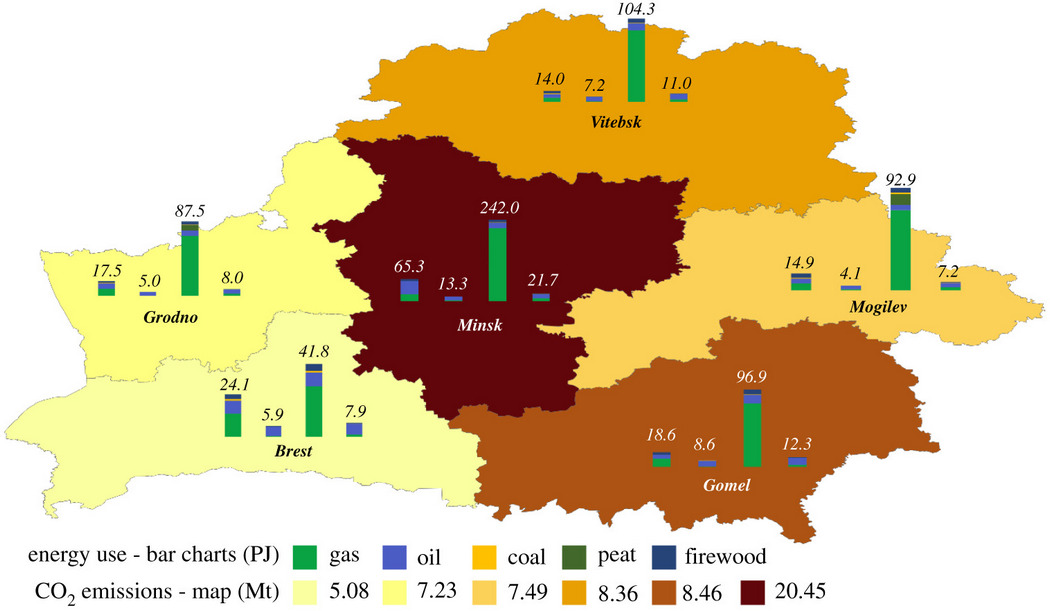Belarus
The rise of global value chains (GCVs) has seen the transfer of carbon emissions embodied in every step of international trade. Building a coordinated, inclusive and green GCV can be an effective and efficient way to achieve carbon emissions mitigation targets for countries that participate highly in GCVs. In this paper, we first describe the energy consumption as well as the territorial and consumption-based carbon emissions of Belarus and its regions from 2010 to 2017. The results show that Belarus has a relatively clean energy structure with 75% of Belarus’ energy consumption coming from imported natural gas. The ‘chemical, rubber and plastic products’ sector has expanded significantly over the past few years; its territorial-based emissions increased 10-fold from 2011 to 2014, with the ‘food processing’ sector displaying the largest increase in consumption-based emissions. An analysis of regional emissions accounts shows that there is significant regional heterogeneity in Belarus with Mogilev, Gomel and Vitebsk having more energy-intensive manufacturing industries. We then analysed the changes in Belarus’ international trade as well as its emission impacts. The results show that Belarus has changed from a net carbon exporter in 2011 to a net carbon importer in 2014. Countries along the Belt and Road Initiative, such as Russia, China, Ukraine, Poland and Kazakhstan, are the main trading partners and carbon emission importers/exporters for Belarus. ‘Construction’ and ‘chemical, rubber and plastic products’ are two major emission-importing sectors in Belarus, while ‘electricity’ and ‘ferrous metals’ are the primary emission-exporting sectors. Possible low-carbon development pathways are discussed for Belarus through the perspectives of global supply and the value chain.

